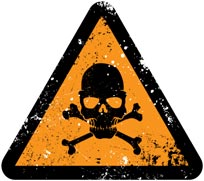- Joined
- Nov 19, 2024
- Messages
- 87
- Reaction score
- 151
- Website
- fieldethos.com
- Deals & offers
- 1
- Media
- 2
- Articles
- 20

Don't Feed the Bears | Field Ethos
By Gayne C. Young It is widely regarded as the worst animal attack in Japanese history and today,…
 fieldethos.com
fieldethos.com
By Gayne C. Young
It is widely regarded as the worst animal attack in Japanese history and today, more than 100 years later, the event is remembered, revered, and still strikes fear in those who live in close proximity to wild areas.
Our story begins in mid-November 1915 in a remote area of Hokkaido, Japan, some seven miles inland from the Sea of Japan coast. It was there that the Ikeda family eked out a living by farming in the only recently established village of Sankebetsu Rokusen‑sawa. One night, an Ezo brown bear (Ursus arctos yesoensis) raided their corn field. As the village sat on the edge of a forest, encounters with wildlife were not uncommon, and the family more or less dismissed the matter.
When the bear returned, family head Kametarō began worrying about his livestock, and so on November 20, he and two local hunters unsuccessfully went after the bear. Ten days later, the bear was spotted and shot by another group of hunters. The hunting party found a blood trail but soon lost it in a snowstorm. Given the amount of blood loss, the hunters believed the bear would eventually perish.
It didn’t.
Bear Feasts on Japan
On December 9, the bear attacked the home of Abe Mayu. The bear killed an infant being watched by the family with a single bite to the head. The family fought back with firewood, but blows delivered by the makeshift clubs had little effect. Abe’s wife was overcome and dragged into the forest.A search party entered the woods the next day and encountered the bear. The predator was shot once but managed to escape. Mrs. Mayu’s all but destroyed corpse was found partially buried in the snow. All that remained of her was her head, torso, and parts of her legs. Given that the bear had eaten most of the farmer’s wife, villagers feared the bear would now have a taste for human flesh.
It did.
The bear returned to the village that night shortly after nightfall. It was spotted and soon shot for what would be the third time. The bear retreated from the village then ventured onto a farm owned by the Miyouke family. The bear crashed through the homestead’s window and began attacking the inhabitants. The family fought back with all they had at their disposal to no avail. The enraged predator injured three then mauled and killed three others.
Villagers ran to the home to help only to hear the daughter-in-law of the family begging the bear to eat her but to leave her pregnant belly intact. Hearing this, a group of men surrounded the home. One group rushed into the back of the home screaming to drive the bear forward. The bear burst through the front of the home and toward armed men. The men fired, but the bear escaped into the forest unharmed.
A group of hunters made ready for the bear’s return on December 11, but the day and night passed with no sighting of the bear. Other hunters and Imperial Forestry Agency agents arrived at the village on December 12. A plan was made to use one of the bear’s victims from an earlier attack as bait to lure the bear from the forest. Many in the village found the idea horrifying but, in the end, all agreed on the plan. Despite this agreement, the bear never came to the bait.
Taking Down a Monster
A shadow appeared from the forest on the night of December 13. A group of hunters called to the shadow and when it failed to answer, the men opened fire. The next morning hunters found blood and bear tracks where the shadow had been shot at the night previous. Despite the onset of a snowstorm, the men tracked the animal until the storm became too fierce. Only famous bear hunter Yamamoto Heikichi and guide Ikeda Kamejirō continued onward. Yamamoto soon found the bear resting near a Japanese oak. Yamamoto stalked to within 65 feet and killed the bear with one shot to its heart and another to its head.The bear was massive, weighing more than 750 pounds and standing almost nine feet tall. The remains of several humans were found in its stomach. The bear’s body was returned to the small community where villagers ate it in revenge for the victims. The skull and some of the fur of the bear were kept but later lost.
A total of seven people lost their life to the bear. Another three were severely injured. Most in the village left after the attack, leaving Sankebetsu Rokusen‑sawa a ghost town until 1990 when people began moving back to the area. Many theories have been offered over the years, but no one is certain why the normally docile Ezo bear attacked villagers. Today, a memorial to the attack sits in a small clearing near Uchidome Bridge on the Sankebetsu River just outside of town.
